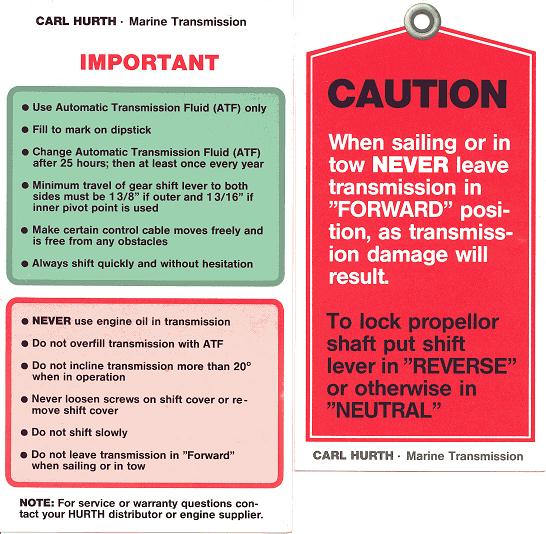Props
When in doubt, leave it in reverse. It is true some engines are not affected by the lack of lubrication when freewheeling, but it goes against my instincts to have a shaft spinning without lubrication. You will never hurt anything by leaving it in reverse.
My experience tells me there is more drag with a spinning prop than a stopped one, but it may not be as true with a 3 blade which cannot be set in an "aligned", low drag position...
For sure, I believe that with a 2 blade fixed prop locked in a vertical position you will have less drag than you would with it spinning. This is easy to do-when the boat is at rest (or on a cradle), with the engine off and the tranny in neutral, spin the prop so that the blades are up and down (if you are in the water you will need a swimmer to check this!), then take a magic marker and make a mark on the top of the shaft near the coupler (somewhere where you can see it and get to it from one of the access ports or seat lockers).
When you shut the engine down, put the engine in reverse to stop the prop, then neutral. Rotate the shaft by hand until the mark is in the same spot, then lock the tranny in reverse, and leave it alone. Having the blades straight up and down right behind the trailing edge of the keel should really reduce prop drag and enhance sailing performance.
I have heard the research saying a spinning 3 blade is faster than a locked one, but it seems odd to me, and you can't hurt the tranny by leaving it reverse.
I will leave the 3 blade drag argument to smarter folks than me, but for a 2 blade fixed, locked and vertical is fastest and safest for the engine.
Not that I have an opinion:nerd:
Cheers


